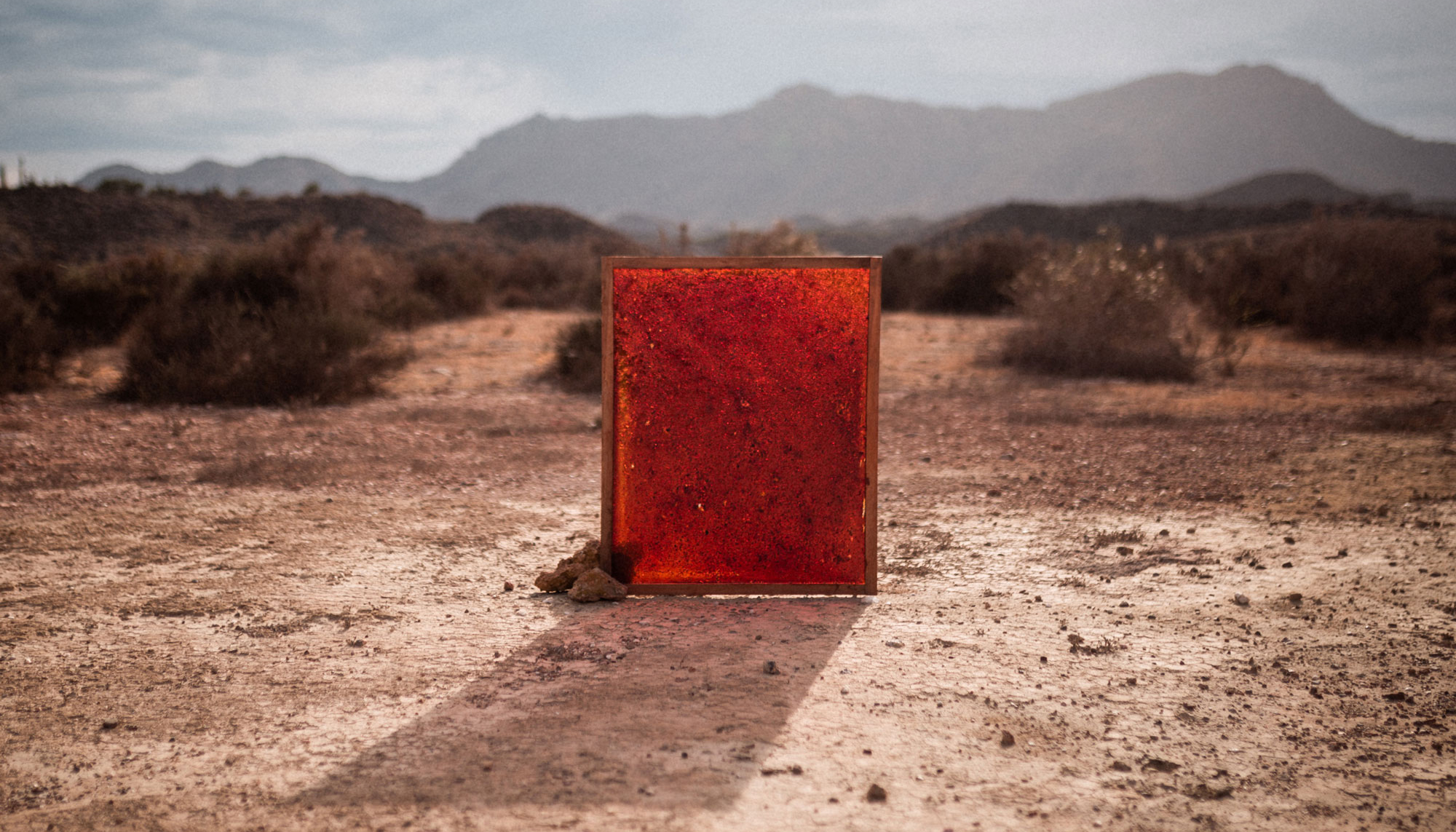
Bio window in the Tabernas desert.
info
MATERIALS:
AGAVE PULP, HONEY, BIOPOLYMER, OCEAN WATER
LOCATION:
Montemero Art Residency, Almeria Spain, 2023
CREATED WITH:
NICOLE CHARLES, Emily Pappa
Support:

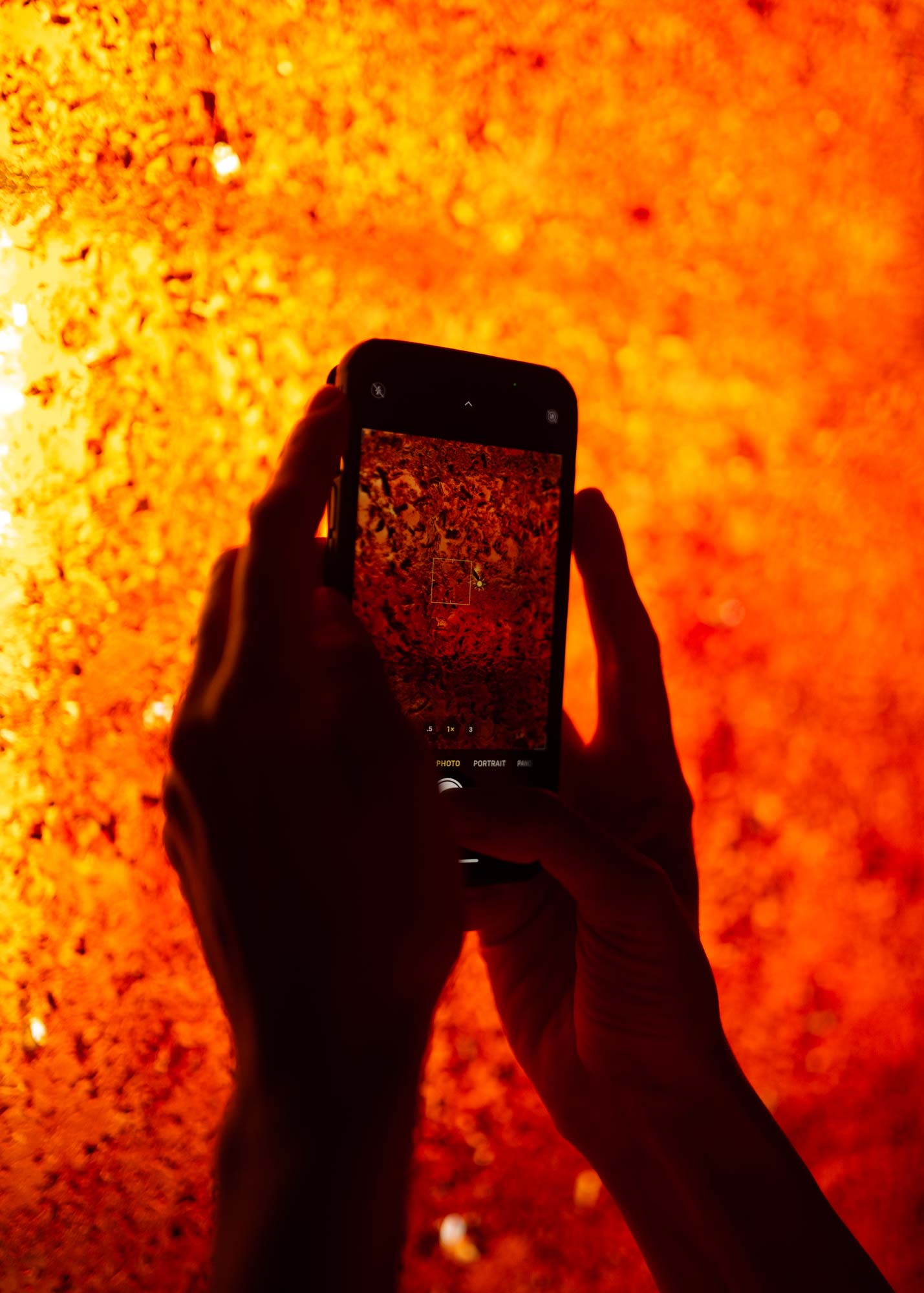
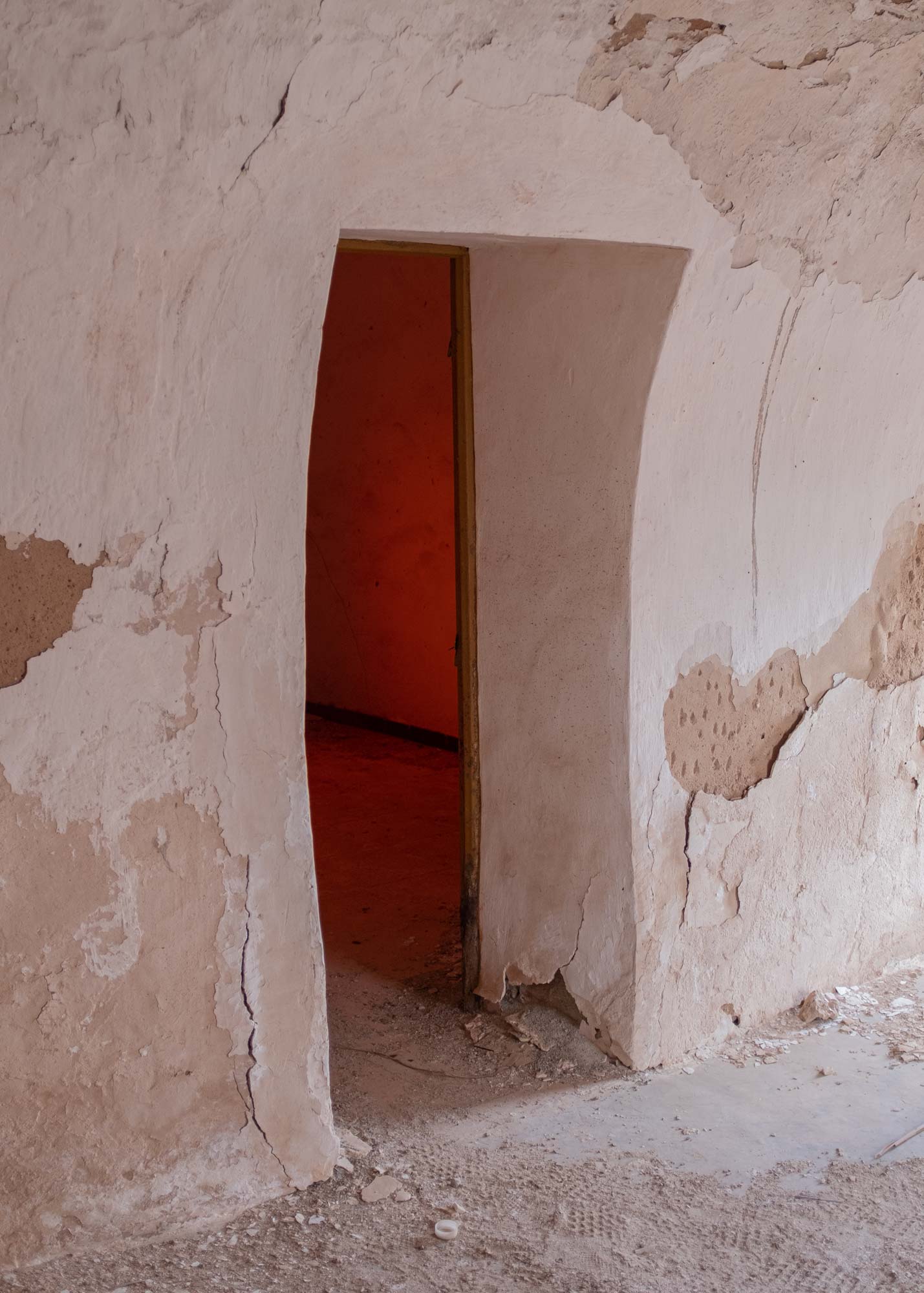
Detail of the window through phone, light filled room of the house.
Description
In the 1940s & 50s, more than 600 hectares of native shrublands in the Andalusia region of Spain were replaced by mixed plantations of Agave with the intention of fiber production. Due to a low initial yield and the invention of new synthetic fibers, the plantations were abandoned 4 years later. Unexpectedly, the agave plant thrived in the sandy soil and increased its ability to reproduce and grow in these harsh conditions, resulting in its invasive nature throughout the area today.
By the 60s, Andalusia began its transformation into what is now known as “el mar de plástico”, or the “plastic sea”, blanketing the region in plastic greenhouses and agricultural materials. Each year, this region generates 33,500 tonnes of plastic waste, some of which is illegally dumped or inevitably makes its way into the riverbeds and out to the Mediterranean Sea.
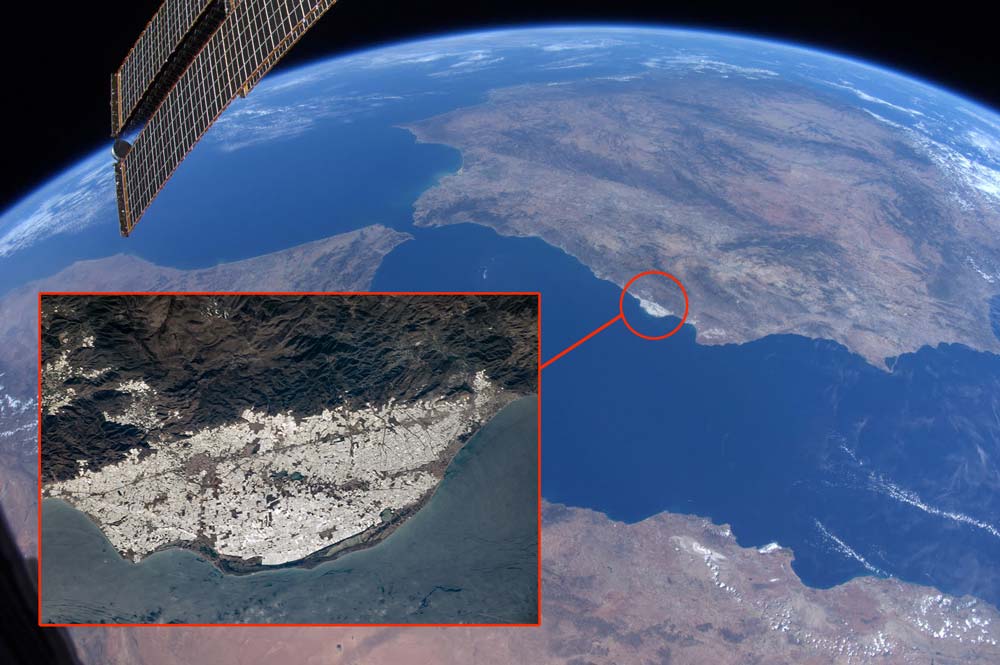
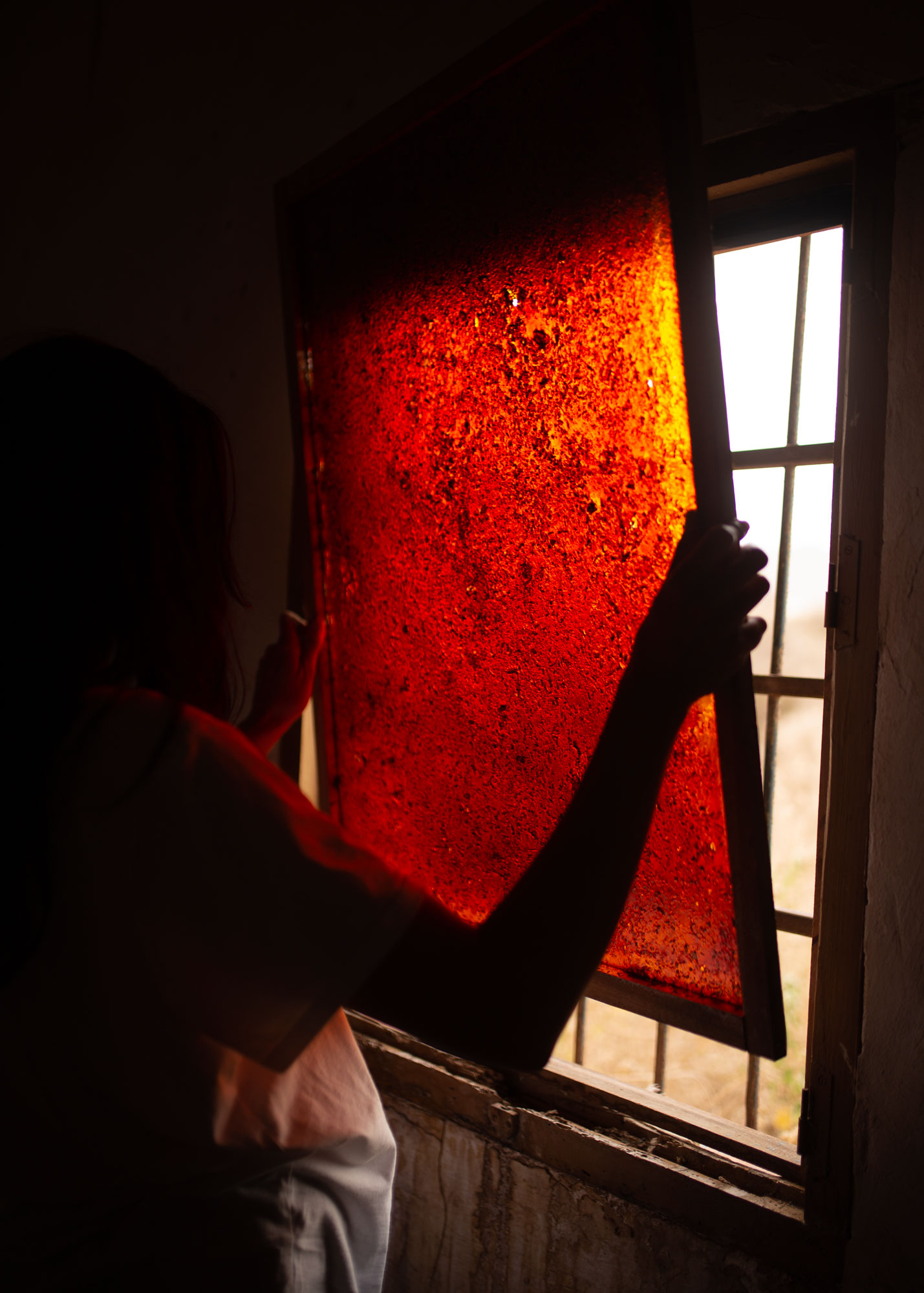
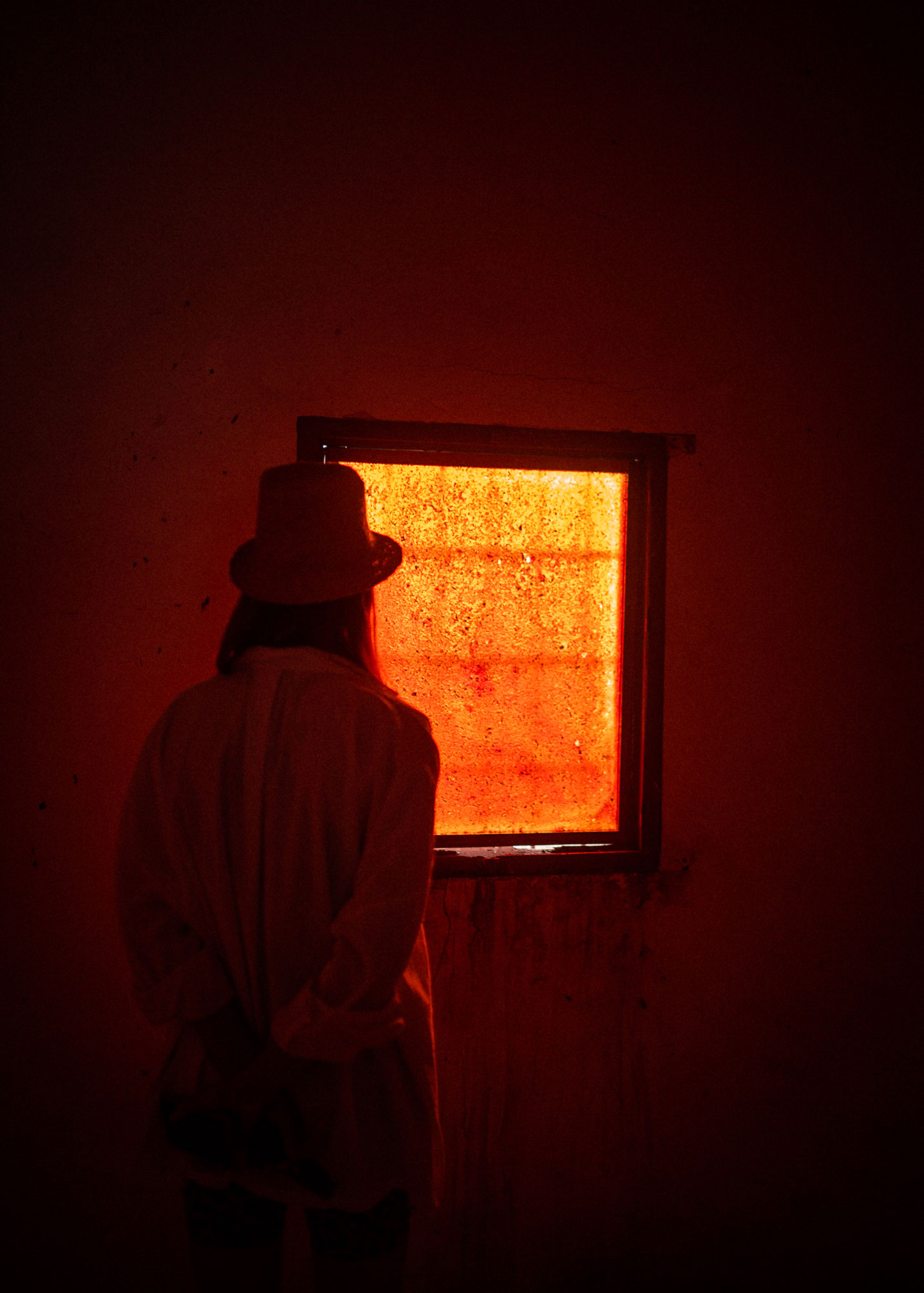
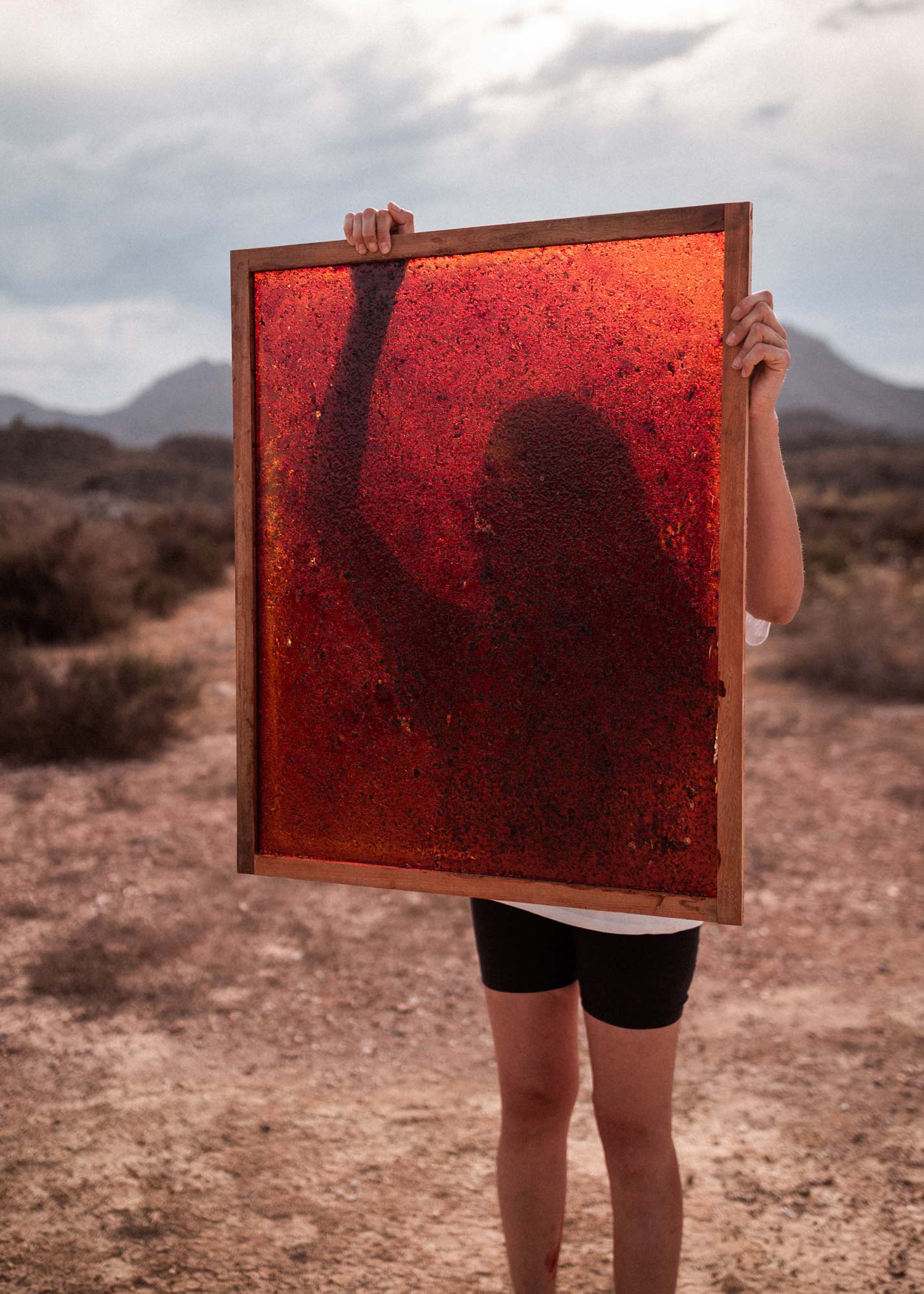
When put in place the window casts a glow on the interior of the forgotten space.
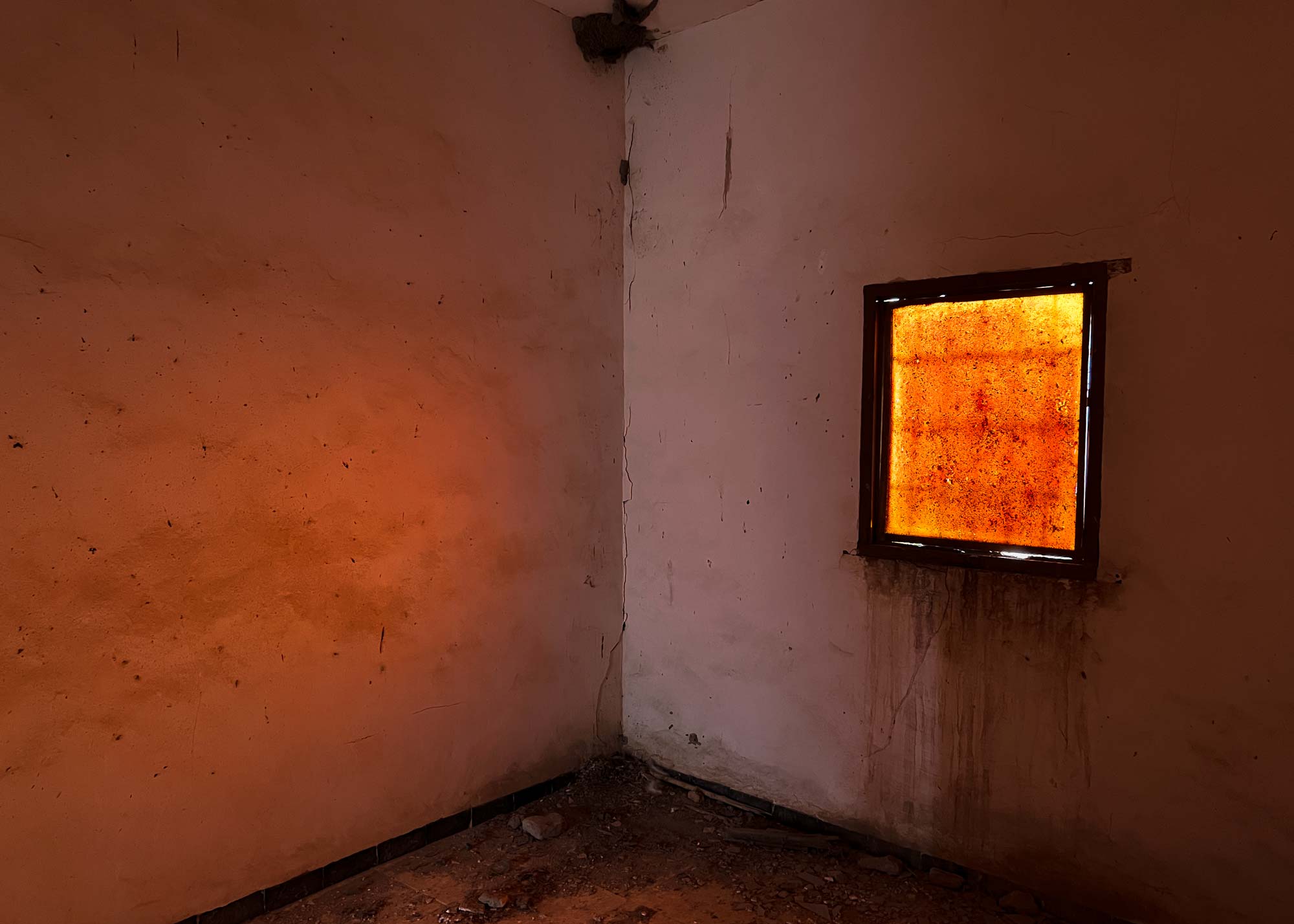
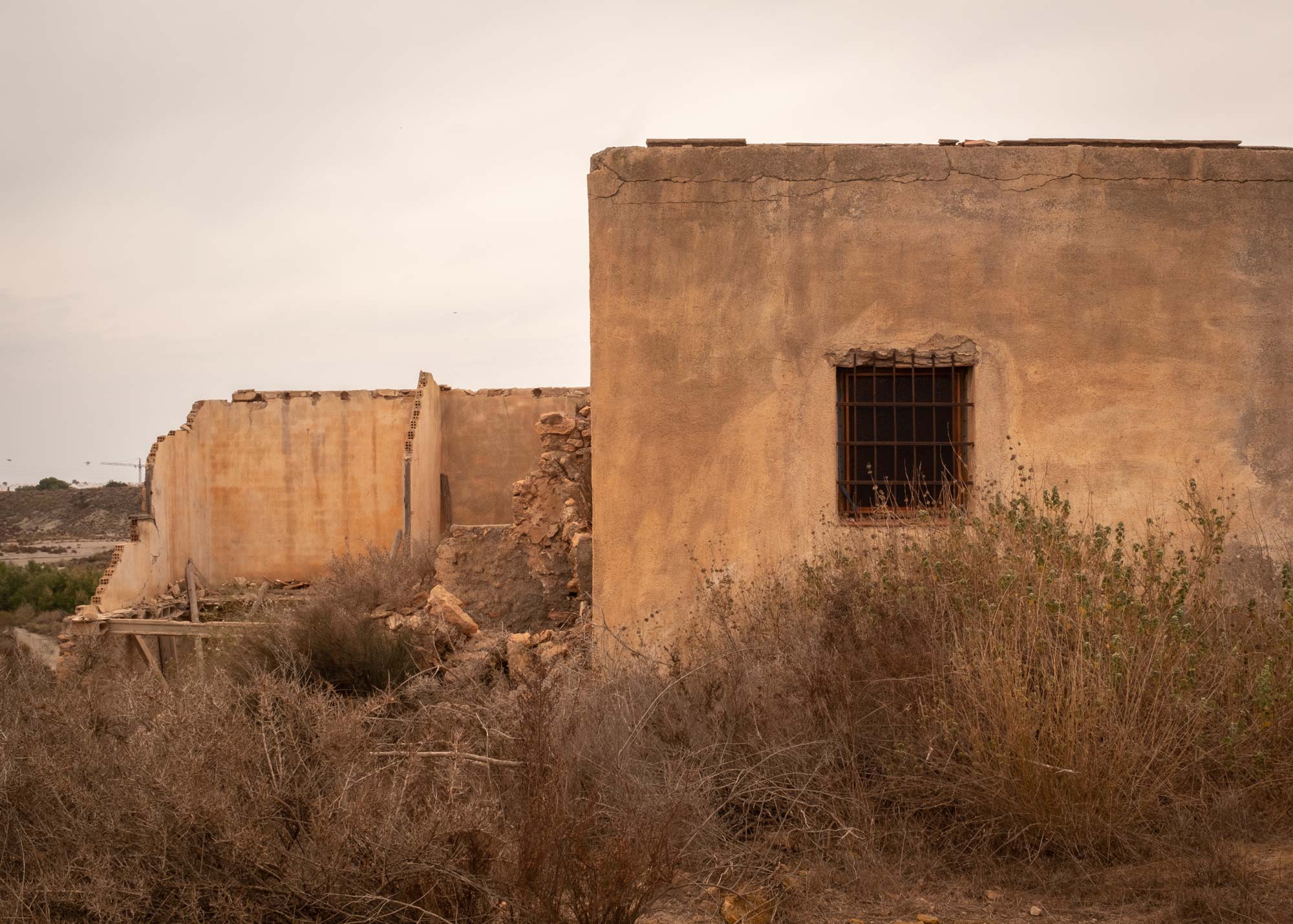
The window was installed in an abandoned home in the desert.
Drawing on this history and current state of the region, we focused on agave pulp and other local, natural and waste ingredients to create a bio-plastic window. Our goal was to shed light on agave as an abundant and ignored resource and the agricultural plastic pollution in the area.
The window was installed in an abandoned and neglected house on the edge of the Tabernas desert. It fills the room with a warm and welcoming glow and distorts the view of the drought stricken desert and plastic covered greenhouses.
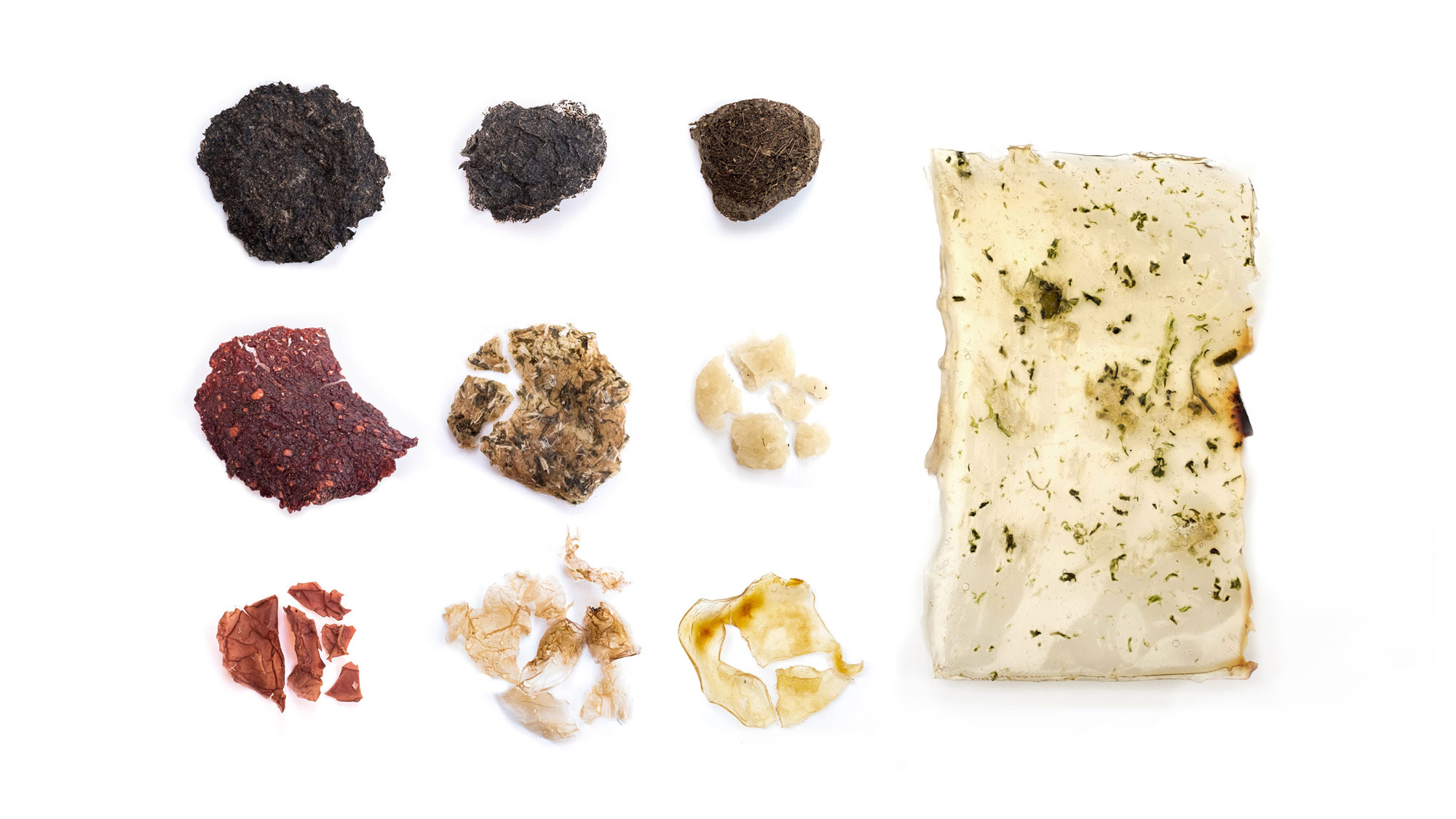
Initial tests and samples exploring agave, aloe, and both vegetable and animal biopolymers.
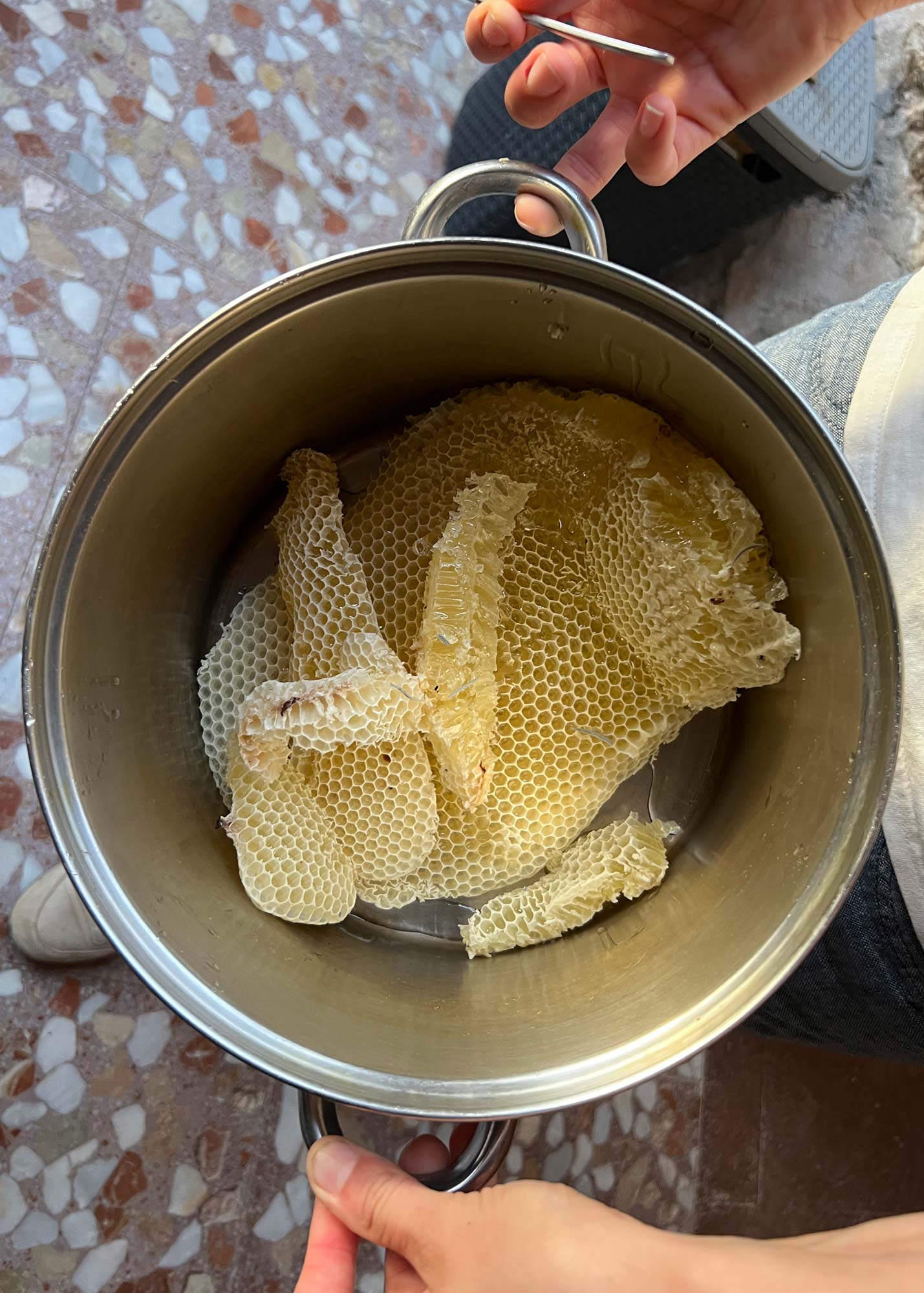
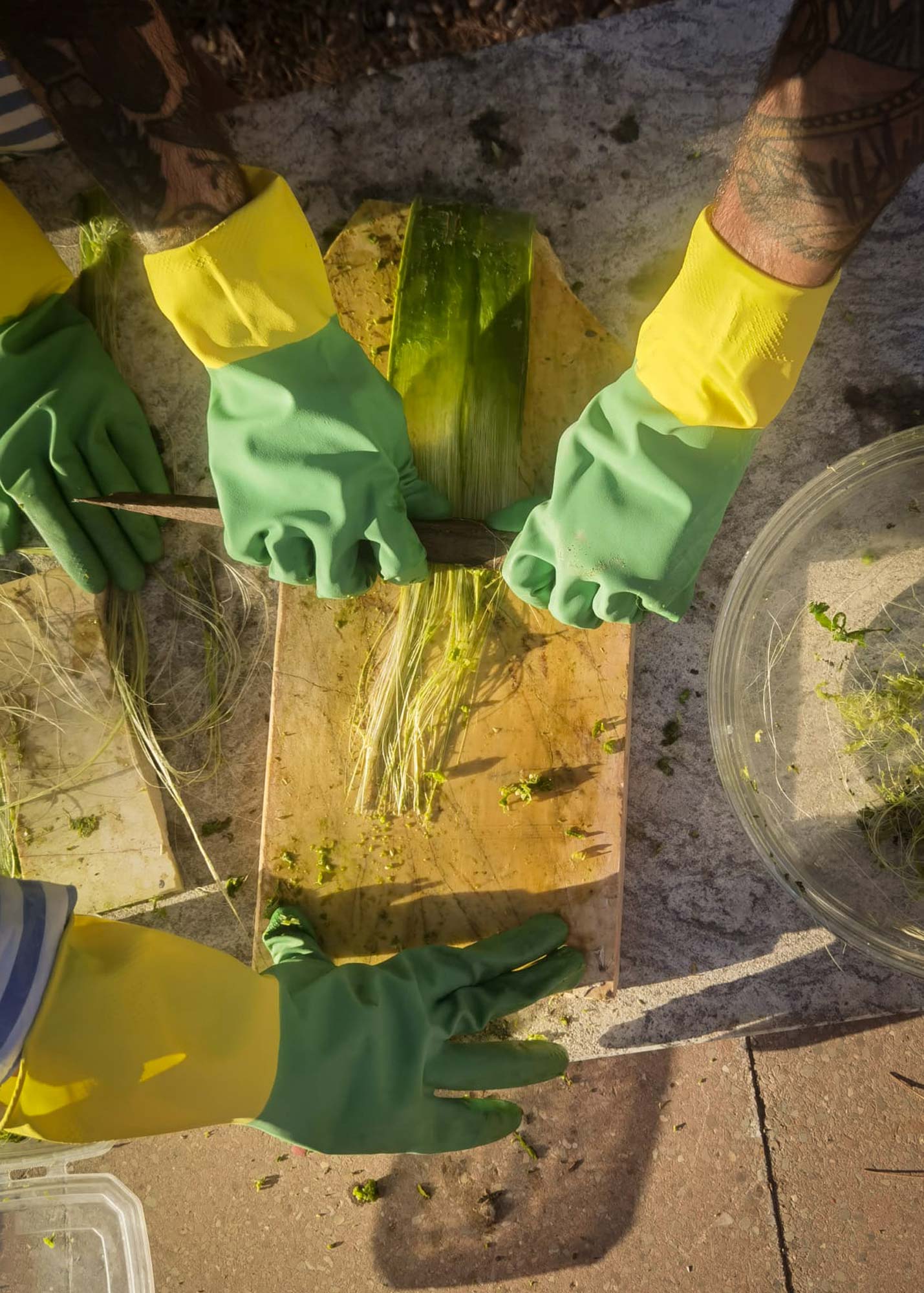
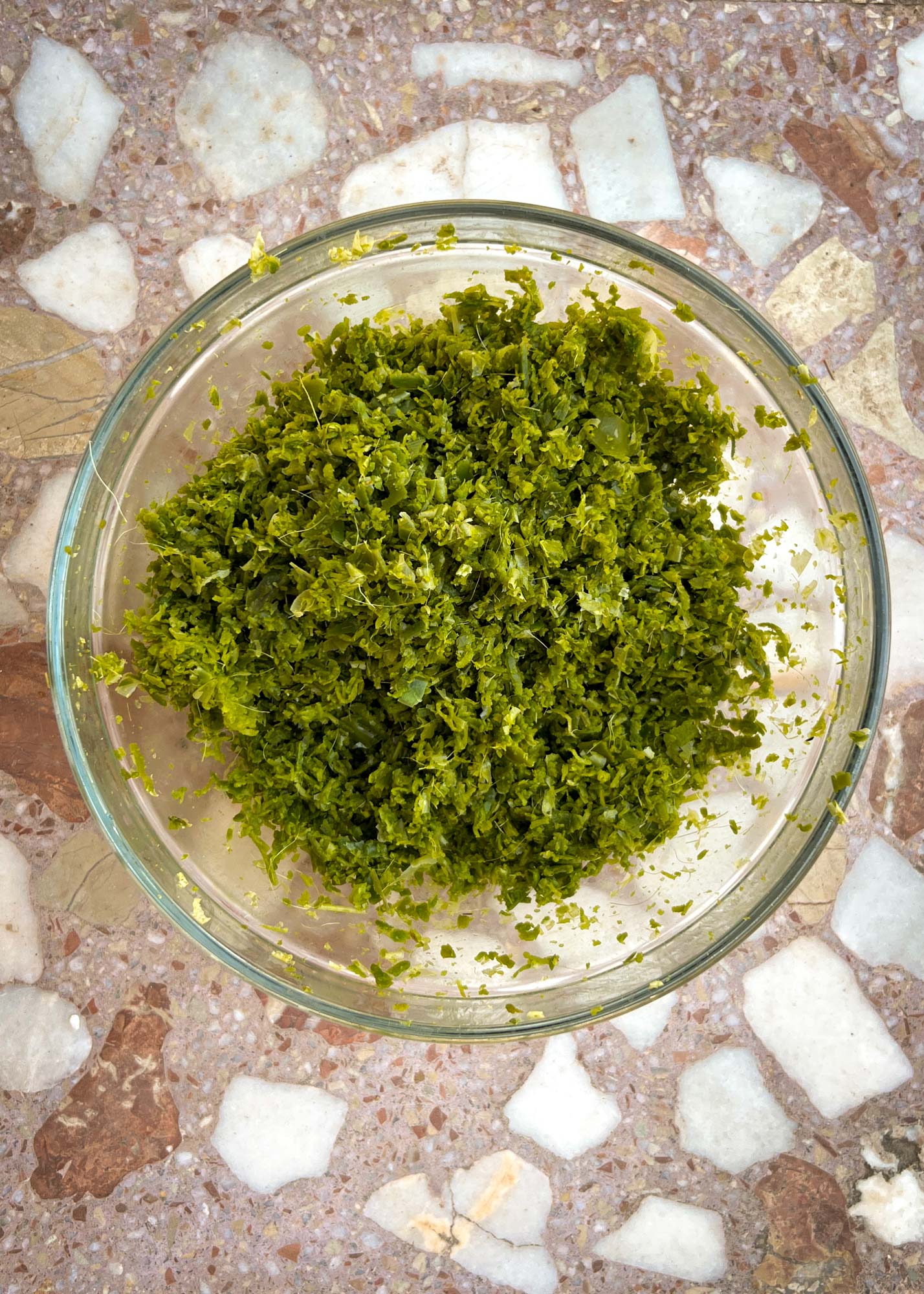
Honey harvested on site, Agave leaf being processed, Agave pulp.
conclusions
Although bio-plastics are not a solution to the issue of plastic use in agriculture, bringing with them their own questions of sustainability and production, could we create a more environmentally friendly material from the ignored invasive plants thriving in this landscape?
The final product contained some ingredients outside of what were naturally available around the Montemero property, but our testing and final product showed us that with more time and research, the possibility of a plastic-like material could be possible from these local and waste ingredients.

Bio window in the Tabernas desert.
info
MATERIALS:
AGAVE PULP, HONEY, BIOPOLYMER, OCEAN WATER
LOCATION:
Montemero Art Residency, Almeria Spain, 2023
CREATED WITH:
NICOLE CHARLES
Support:



Detail of the window through phone, light filled room of the house.
Description
In the 1940s & 50s, more than 600 hectares of native shrublands in the Andalusia region of Spain were replaced by mixed plantations of Agave with the intention of fiber production. Due to a low initial yield and the invention of new synthetic fibers, the plantations were abandoned 4 years later. Unexpectedly, the agave plant thrived in the sandy soil and increased its ability to reproduce and grow in these harsh conditions, resulting in its invasive nature throughout the area today.
By the 60s, Andalusia began its transformation into what is now known as “el mar de plástico”, or the “plastic sea”, blanketing the region in plastic greenhouses and agricultural materials. Each year, this region generates 33,500 tonnes of plastic waste, some of which is illegally dumped or inevitably makes its way into the riverbeds and out to the Mediterranean Sea.





Images from the installation of the window.
Execution
Drawing on this history and current state of the region, we focused on agave pulp and other local, natural and waste ingredients to create a bio-plastic window. Our goal was to shed light on agave as an abundant and ignored resource and the agricultural plastic pollution in the area.
The window was installed in an abandoned and neglected house on the edge of the Tabernas desert. It fills the room with a warm and welcoming glow and distorts the view of the drought stricken desert and plastic covered greenhouses.

Initial tests and samples exploring agave, aloe, and both vegetable and animal biopolymers.



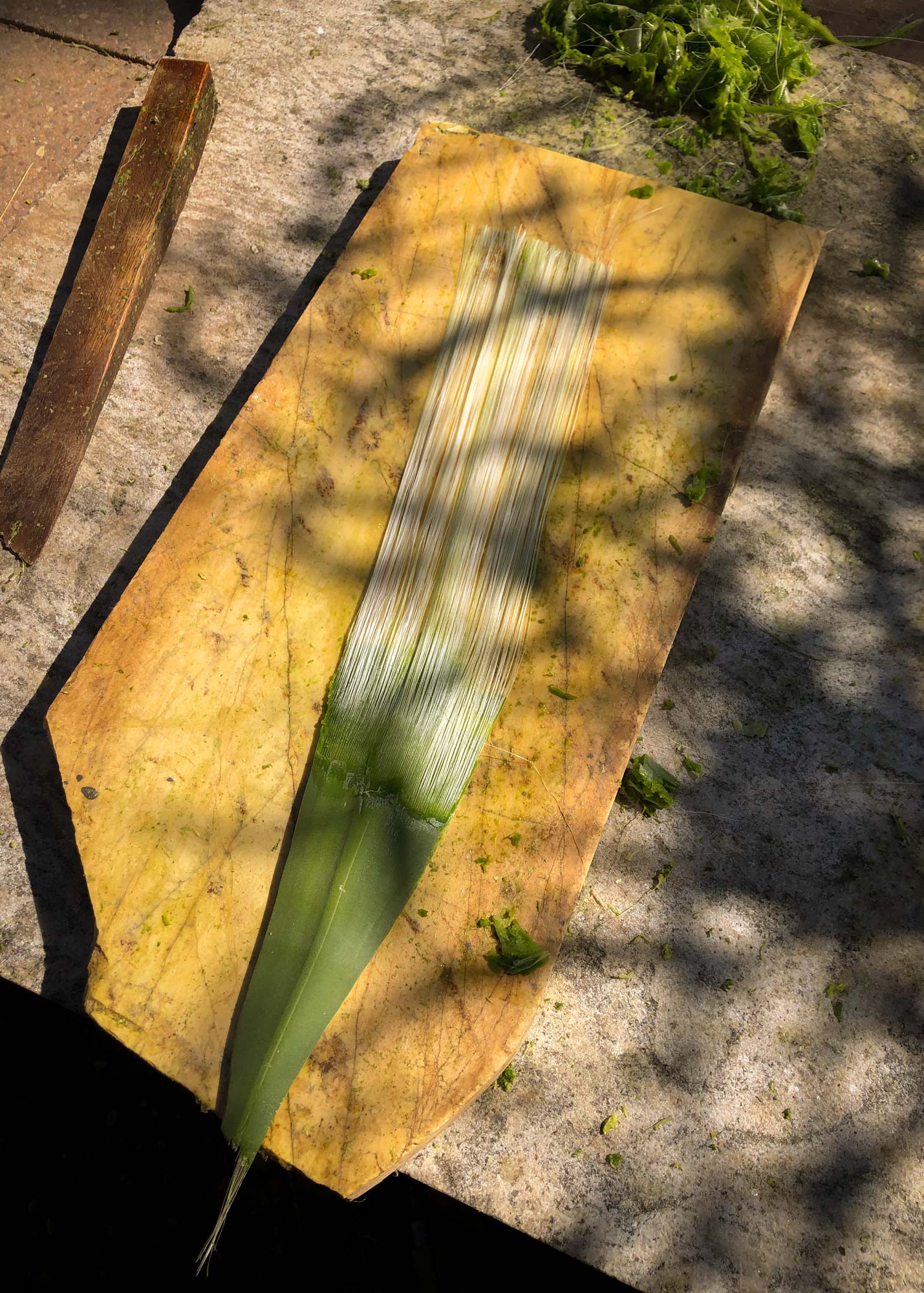
Honey harvested on site, Agave leaf being processed, Agave pulp.
conclusions
Although bio-plastics are not a solution to the issue of plastic use in agriculture, bringing with them their own questions of sustainability and production, could we create a more environmentally friendly material from the ignored invasive plants thriving in this landscape?
The final product contained some ingredients outside of what were naturally available around the Montemero property, but our testing and final product showed us that with more time and research, the possibility of a plastic-like material could be possible from these local and waste ingredients.
Designer, Artist
Creator, Designer
For over 2 decades I have worked for a vast array of clients across North America, creating digital + print work, objects, and merchandise collected around the world.
A label focused on experimental, environmentally based, very limited objects through sustainable material exploration and collaboration with musicians and artists.
Collective
Musician
A non-profit located on the arid coast of Almeria, Spain. Its site has inspired numerous projects that: defend the ocean, resolve environmental plastics, equilibrate agriculture and prevent desertification. It serves to function with the purpose of scientific research, design and reporting through the collaboration of respected experts.
I record music, scores, soundtracks, and field recordings for art exhibitions, films, and personal exploration. For the most part, Extempore is a mostly improvised analog process capturing sonic moments in time.
Designer, Artist
For over 2 decades I have worked for a vast array of clients across North America, creating digital + print work, objects, and merchandise collected around the world.
Creator, Designer
A label focused on experimental, environmentally based, very limited objects through sustainable material exploration and collaboration with musicians and artists.
Collective
A non-profit located on the arid coast of Almeria, Spain. Its site has inspired numerous projects that: defend the ocean, resolve environmental plastics, equilibrate agriculture and prevent desertification. It serves to function with the purpose of scientific research, design and reporting through the collaboration of respected experts.
Musician
I record music, scores, soundtracks, and field recordings for art exhibitions, films, and personal exploration. For the most part, Extempore is a mostly improvised analog process capturing sonic moments in time.